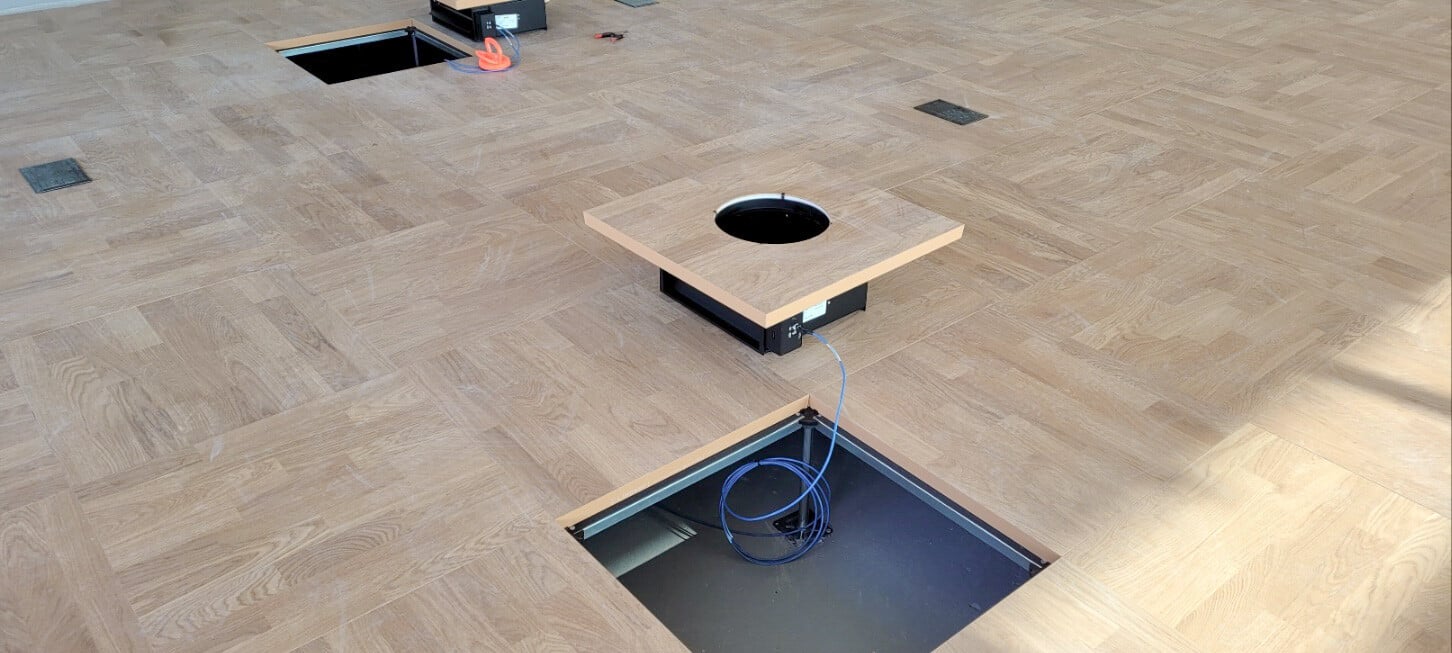KT, South Korea's largest telecommunications provider, recently completed a new branch headquarters in the booming Pangyo Valley, located in Seongnam, South Korea. Known for delivering cutting-edge landline, cellular, and integrated broadband services, KT needed a workspace that reflected its innovative spirit and commitment to excellence.
PROJECT
 Pangyo Valley is recognized as South Korea’s equivalent of California’s Silicon Valley. Home to both established companies and start-ups, the tech hub is known for its pursuit of advancement in the global marketplace through cutting-edge solutions.
Pangyo Valley is recognized as South Korea’s equivalent of California’s Silicon Valley. Home to both established companies and start-ups, the tech hub is known for its pursuit of advancement in the global marketplace through cutting-edge solutions.
“In 2017 the valley accounted for 22 percent of the province’s gross domestic product,” KoreaTechDesk recently reported. “This hub aims to merge different industrial sectors, mostly within information and communications technology, to create new business opportunities and foster the growth of startups.” Over 1,200 technology companies are based in Pangyo Valley, generating 77.4 trillion won – or $58 billion – in sales.
With the immediate success of the first Pangyo Valley, development was soon underway to include Pangyo Valley 2 and 3. The KT office building, based in Pangyo Valley 2, Zone 2, wrapped up construction in April 2023, consisting of 12 aboveground stories and four basement levels.

PROJECT ASK
Pangyo Valley is more than a tech hub—it's a “high-tech city for the public,” where office spaces must balance functionality and inspiration. Companies in the region aim to attract and retain top talent by offering workplaces that support comfort, productivity, and innovation.
For KT, the challenge lay in addressing the shortcomings of its original air-only HVAC design. Insufficient perimeter cooling posed a significant risk to thermal comfort and indoor air quality, both critical to employee well-being and productivity. Research shows that poor environmental conditions can reduce workplace productivity by up to 10%, while companies investing in employee health see a stock value appreciation of 325% compared to market averages.1
KT needed an innovative solution to enhance cooling capacity, especially along the perimeter, while aligning with its sustainability goals.
AIRFIXTURE SOLUTION

Our UFAD implementation – versus traditional overhead HVAC systems – was the perfect way for AirFixture to meet these challenges head-on with simple yet effective solutions. For the core area, we proposed the MIT3-CR-VAV (variable air volume) model, which provides superior thermal comfort through time modulation control and maintains a consistent air throw height under any conditions.
To address insufficient cooling at the perimeter, we recommended the IFCB-VAV (in-floor chilled beam) system. This hybrid water and air cooling unit offers 50 percent more cooling capacity compared to air-only designs, effectively handling both heating and cooling requirements for the perimeter. On top of improved cooling capacity, using IFCB is more eco-friendly, reducing fan energy consumption by 20 percent.

RESULTS
Over 2,000 floor diffusers and 600 perimeter linear troughs are now installed in the KT Building, all powered by AirFixture VAV UFAD system. Indoor air quality and thermal comfort significantly outperformed traditional overhead systems seen in other offices. During South Korea's record-breaking summer of 2023, the IFCB perimeter unit proved highly effective, maintaining comfortable temperatures even under extreme conditions.
In a region known for companies that strive for creative and forward-thinking technology, KT's implementation of UFAD was a strategic choice for success. The result is a workplace that not only meets today's challenges but is poised for future growth.

1Hartke, J., Yang, M., Gray, W. A., & Worden, K. (2022). "Investing in health pays back: The growing research behind the business case for healthy buildings and healthy organizations." International WELL Building Institute.
LOCATION
Pangyo Valley, South Korea
AIRFIXTURE PRODUCTS
MIT3-CR-VAV, IFCB-VAV
ARCHITECT
AIRFIXTURE REPRESENTATIVE
